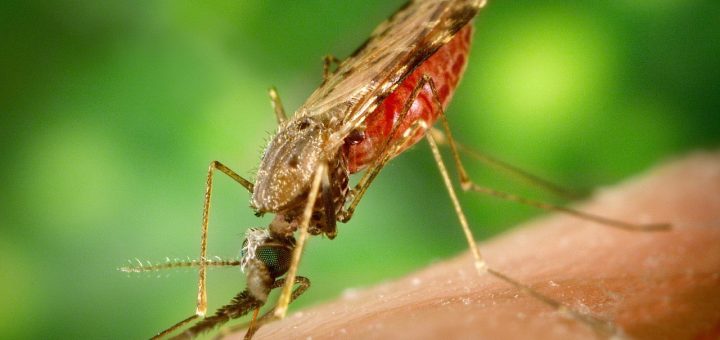Why Malarial Parasites Keep Track of Time

Parasites – such as protozoans responsible for the vector-borne disease malaria – must successfully navigate their host environment in order to survive and thrive. During their life cycle, malaria parasites infect the host’s red blood cells, multiplying asexually1. Eventually, host red blood cells rupture, releasing a burst of malarial parasites which rush to continue the cycle of invading other red blood cells within the host. This stage of the disease is where clinical symptoms occur, such as fever, chills, and anaemia.
Curiously, malaria cell bursting has been found to occur at particular times of the day; this prompts the idea that these parasites have an internal biological clock keeping track of time. Each species of malaria is thought to have a slightly different length of internal clock cycle. For example, Plasmodium falciparum, the deadliest out of all five human malaria species, follows a cell bursting cycle of 48 hours. Another example is Plasmodium chabaudi, a species of rodent malaria with a cell bursting pattern of 24 hours, which has been said to have ‘Cinderella syndrome’ because of its particular timing of cell bursting activity to midnight2. But why did timed cell bursting activity evolve?
The answer is not yet clear. However, researchers predict that it could have arisen as a result of an evolutionary arms race between parasites and the host immune system. Malarial parasites require two different types of host – the initial insect vector host and the latter vertebrate intermediate host, such as a human. In humans, levels of immune system activity fluctuate across a 24 hour day as controlled by our circadian clock3. By evolving the ability to keep track of time, malaria parasites can time their cell bursting activity to the period of the day when the host immune system is at its least active, therefore avoiding a serious counterattack. Not only this, malaria parasites tend to burst out in synchrony, overwhelming the host’s immune system with huge numbers of parasites at once. This safety in numbers, plus a lowered host immune system, maximises the parasites’ advantage for survival.
Edited by Richard Murchie
References
- Singh, P. et al., (2017), Molecular mechanisms that mediate invasion and egress of malaria parasites from red blood cells, Current Opinion in Hematology, 24(3), 208-217
- Mideo, N. et al., 2013. The Cinderella syndrome: Why do malaria-infected cells burst at midnight? Trends in Parasitology, 29(1), pp.10–16. Available at: http://dx.doi.org/10.1016/j.pt.2012.10.006
- Scheiermann, C., Kunisaki, Y. & Frenette, P.S., 2013. Circadian control of the immune system. Nature Reviews Immunology, 13(3), pp.190–198. Available at: http://www.nature.com/doifinder/10.1038/nri3386










